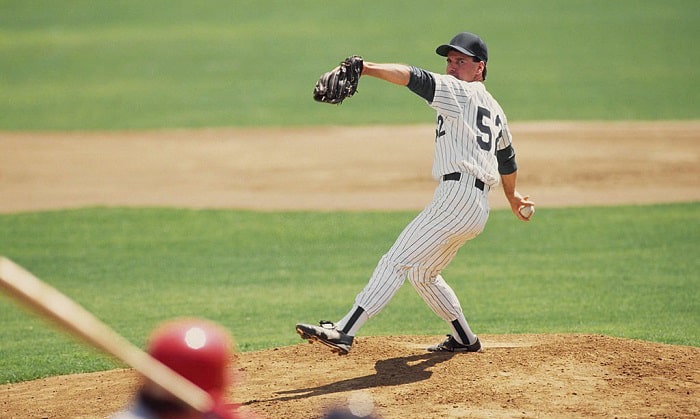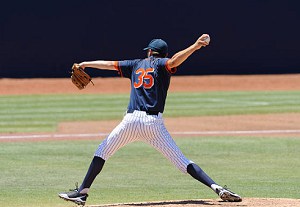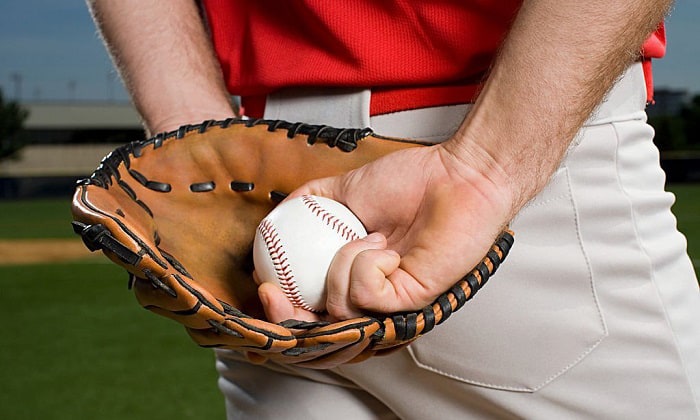When you were young, you probably played catch with your friends or parents. This simple game can cultivate skills of one of the most crucial roles in baseball – pitching!
Baseball is a fantastic sport that mixes the strategy, skill, and patience of the individual player and the team. As a pitcher, making your winning throw would heavily dictate the outcome of the game.
Aside from the fastball pitch, you can also try to learn how to throw a cutter. This pitch variation makes the ball faster and less predictable for the batter!
Step-by-Step Guide
Mastering the cutter pitch varies per player. Some learn and perfect it faster than others. You need to start practicing having a feel of how it goes and if it is suitable for your playstyle.
Here are the steps you need to follow for practicing throwing cutters. To get started, all you need to do is get your trusted glove and baseball and position yourself on the mound.
Step 1. The Grip
Mastering cutter pitch baseball begins with knowing the grip and getting comfortable. To grip a cutter, try following these steps:
- Modified four-seam fastball grip
Many players often use the modified four-seam fastball grip. All you need to do is grasp onto the ball so that there are four contact points on your index and middle fingers to the ball. Both the base of your fingers and the tips must contact the ball firmly.
For this baseball cutter grip, keep your fingers close to each other to help you produce a solid force that gives the velocity and spin you need to throw a cut fastball.
Then, to modify the grip for cutters, you also need to skew your fingers a bit so that your middle finger is along the ball’s seams. By skewing, your pinky finger should be slightly offset, giving the spin you need for an effective throw.
Among your fingers, the thumb will play the role of control and comfort. For your thumb, position it at the 4 to 5 o’clock position.
There also needs some wrist action for this one. If you are right-handed, slightly turn your wrist to the left. Do the opposite to throw a cutter left-handed style.
Most pitchers would have a different approach to gripping. But these are the fundamental steps to achieve the form you need for the cut fastball grip.
Play around with the grip until you get comfortable. Then, grasp the ball with much pressure on your middle finger, index finger, and thumb.
Step 2: Get Throwing!
Now that you are comfortable with your offset modification to the classic four-seam grip, it is time to deliver the ball to your opponent. Hopefully, they will miss it!
In the actual MLB cutter situation, try to hide your cutter grip beneath your glove. You would not want to spoil the surprise!
Deliver with speed similar to a fastball and extend your arm straight and to its fullest length.
Throw a cutter baseball with a bit of spin. Your offset grip already helps make this happen. Before completely releasing the ball, slightly divert your wrist downwards as you apply the most pressure onto the ball using your middle finger.
When right-handed pitchers deliver the ball like this, the ball is expected to skew a few inches away from what the right-handed batter would typically call the “sweet spot.”
Follow these steps and practice as much as you can. Next, you know that you can throw cutters like a pro!
Frequently Asked Questions
1. What is a cutter pitch?
A cutter pitch is a throw where the player makes the ball go as fast as possible with a sharp horizontal skewed movement. This “cutting action” is the cutter’s main feature. Normally, players take a while before they master this in the big games.
Throwing a cutter is a great skill to add to your set of pitching prowess. The goal of this pitch is to make your opponent fail to hit the ball as it glides toward an unexpected position. They would either fail to hit the bulk of the ball or miss it due to its fast speed!
2. How would you describe the movement of a cut fastball?
The cut fastball movement is best described somewhere between the fastballs and sliders. A well-delivered cutter is expected to land slightly to the side of the pitcher and much closer to the hands of the batter.
You can look at the cutter movement as a glove-side motion with a sudden but sharp change in direction, plus a very high velocity! Of course, since the ball’s movement is so intricate, it indeed takes practice and a feel for the correct flick of the wrist.
3. Why is throwing a straight fastball essential for every pitcher?
The straight fastball is a pitch that is the most common and most repeatable. When executed well, the fastball can be a powerful arsenal even in the big leagues.
The thing is that its grip and form are the basis for other variations. This includes variations like cutters, sliders, and much more!
To throw a cutter, youth players can start by learning the basics and develop over time. Players are trained with the basics to cultivate their own play style in the future.
Conclusion
As a pitcher, you can never go wrong by trying out a new pitching style. If you want to switch things up and confuse your opponent, try practicing the cutter pitch!
We discussed steps on how to throw a cutter, including the grip and its delivery. The main goal is to make the ball skew as it reaches the home plate. The direction and speed of a cutter will indeed be challenging for the hitter.
Plus, we noted some important information about the throw. To master any pitches, you need to be determined for long-term development. Success unquestionably does not come overnight!

A powerful swing and the ball is flying across the field, just one hit, and we might never forget the thrill it brings. I do not know about you, but I never do. Every baseball game is the chance to compete with others and cooperate with your teammate. It is among my biggest passions.

















